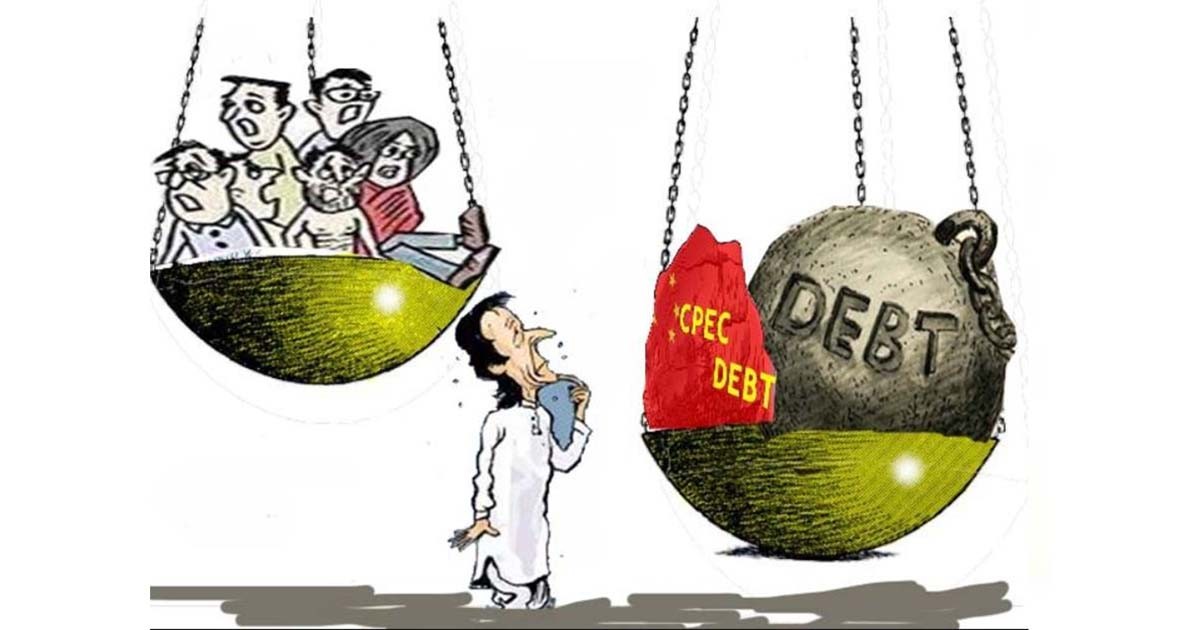News Analysis |
Bruno Olierhoek, the President of the Overseas Investors Chamber of Commerce and Industry (OICCI) said, “Investments in special economic zones, railway, roads and ports will significantly cut export costs”, in an interview on March 19, 2018. He also clarified, “CPEC is a loan and Pakistan is using it for infrastructure and its energy issues. This is something that is (also) misunderstood abroad, that China is somehow giving money to Pakistan. It isn’t the case.”
My article published in @etribune today. The roadmap published by #PTI govt has emphasized on the export-import gap. How crucial is it for the government and how important is it to boost exports?#pakistan #exports #investinpk #economy #tariffs #CPEC https://t.co/Vkyo8i5dle
— Aadil Nakhoda (@EconomistAadil) April 29, 2019
The energy projects have been prioritized in the Early Harvest Projects of the China Pakistan Economic Corridor project. There were 16 projects prioritized with the total capacity of 10,400MW as well as 8 actively promoted projects. The year 2017 witnessed the launch of operations of 2x660MW Sahiwal Coal-Fired Power Plant, 50MW Dawood Wind Farm and 50MW Sachal Wind Farm.
Therefore, the development of infrastructure including roads, rails, and fiber optical lines can all play a significant role in the development of the competitiveness of Pakistan’s products with the availability of sufficient energy. Almost all projects under CPEC are developing on the basis of Built, Operate and Transfer (BOT), though there are also some projects which are under concessional loans or grants. However, many economists have questioned the CPEC project’s lack of transparency and accountability
Pakistan is in need to gain the membership of a regional integration agreement which will be helpful for regional corporate networks
‘There ain’t no such thing as a free lunch” is a popular adage communicating the idea that it is impossible to get something for nothing; an idea highly reflective of CPEC’s financial framework. China’s investment may benefit Pakistan’s infrastructure in many ways, however, Pakistan is well aware that it has to pay back. Simultaneously, China being Pakistan’s time-tested friend, initiated a process of foreign investment in the latter as it has only 1 percent of Foreign Direct Investment in the total GDP.
Olierhoek emphasized, “Empty containers returning to China don’t make sense. The whole objective of CPEC is to not just create a road from China but to improve the competitiveness of the country and connect it with more countries than it is doing business with today. It is because of this possibility that CPEC is a game changer.”
Both #Pakistan and #China agreed to expedite work by promoting joint ventures and export led growth under CPEC by declaring 2019 as “year of industrial, socioeconomic and agriculture cooperation”.#CPEC #Industry #Agriculture pic.twitter.com/YXM1Qu1prG
— Ministry of Planning and Development (@PlanComPakistan) January 15, 2019
Moreover, once infrastructure and energy projects are completed, it will pave the ways for other countries to invest in the export industries. It is required for Pakistan to enhance the competitiveness of its export commodities so that it can receive sufficient foreign exchange reserves.
There are also other factors required to attract FDI in Pakistan such as better law and order situation and improved security. Fortunately, Pakistan has overcome these challenges to a certain extent. Furthermore, it is yet to be seen that how next year election will unfold.
Pakistan’s economic international is reaching the horizon because of China’s investment in the CPEC project. Subsequently, many countries showed their willingness to participate in the CPEC.
Read more: Economic crisis hurting CPEC?
Simultaneously, Pakistan’s government has to do a lot to dismantle all barriers to increase FDI. For this, Pakistan has to formulate a policy framework for FDI and ensure its economic, political, and social stability. It has to strengthen treatment of foreign affiliates. Policies on functioning and structure of markets (especially competition and policies governing mergers and acquisitions) are also required in this aspect.
Pakistan may conduct investment promotion through image-building and investment-generating activities and investment-facilitation services. Recently a leading investment group from China launched an international campaign in London to promote Gwadar, as a lucrative investment destination. In a month-long campaign, 100 double-decker buses will run on 17 different routes of Central London, dissipating the message of ‘Gwadar: The Gateway to Emerging Pakistan’ imprinted on them.
Gwadar Port and CPEC is China's geopolitical Escape Hatch. https://t.co/low32EpND2 https://t.co/Yjxod1BeLk pic.twitter.com/9B1kppBx1b
— Rich Markets (@RichEconomics) July 25, 2019
The establishment of bilingual schools is can be a good initiative. Pakistan is doing sufficient efforts for teaching Chinese language in order to facilitate themselves to work with their Chinese counter parts.
Pakistan is in need to gain the membership of a regional integration agreement which will be helpful for regional corporate networks. Pakistan being a developing country can enhance its production facilities through FDI. Pakistan may transfer production technology, skills, innovative, and organizational and managerial practices between locations, as well as of accessing international marketing networks. The International Monetary Fund has also expressed its concern over this fiscal impact of CPEC. “During the investment phase, as the ‘early harvest’ projects proceed, Pakistan will experience a surge in FDI and other external funding inflows,” the IMF found in a recent report. However, the surge in imports required for the projects “will likely offset a significant share of these inflows, such that the current account deficit would widen.”
Read more: Pakistan must ‘save’ CPEC before its too late
Pakistan’s economy will take off under the CPEC but it needs to fix the payback time period of loans accepted for the CPEC. The project needs more transparency for unbiased and accurate research so that Pakistan cannot be troubled due to debts. It is estimated that Pakistan would be required to repay principal and interest of approximately $3.5 billion per year over a period of 20 years.














